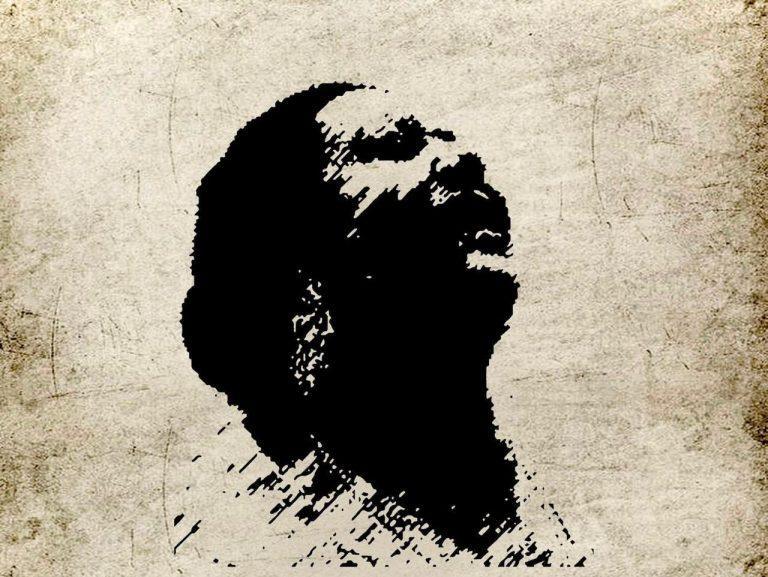Before I even crossed the palace threshold, Umm Kulthum was already waiting. A grand white statue of her stood tall, commanding the entrance. The sound of birds echoed from the Nile’s bank across the street, merging with the soft August breeze. Inside, her unmistakable voice boomed from the speakers, wrapping the air in song. The moment felt less like entering an exhibition and more like walking into her presence.
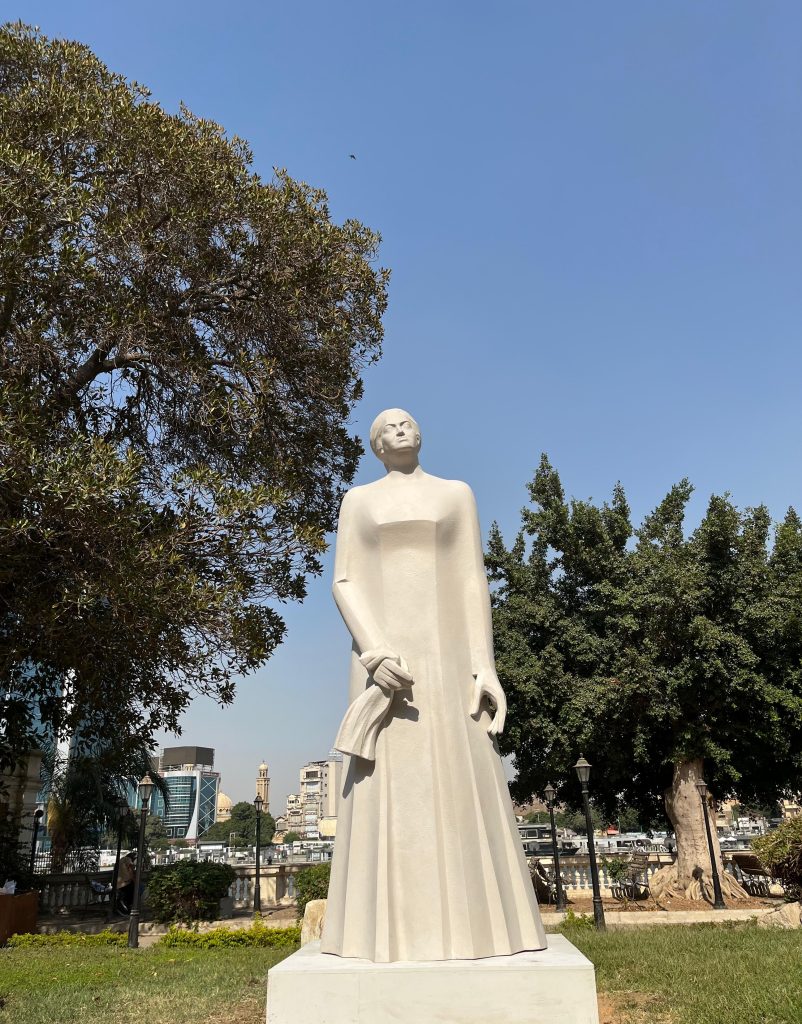
The Palace: An Echo of Grandeur
Aisha Fahmy Palace rises like a sentinel of memory. Built in 1907 by Italian architect Antonio Lasciac, the palace wears its European elegance effortlessly. Its two floors tell their own stories: the first with paintings, the second with treasures of history — including the famous Japanese Room with its gilded statues and intricate engravings.
Each chamber is dressed differently: silk and linen panels, hand-carved decorations, European motifs swirling along the walls. But here, the palace is not the star — it’s the perfect frame for Umm Kulthum’s voice and legacy to come alive.

28 Artists, One Legend
The Voice of Egypt exhibition gathers the creativity of 28 Egyptian artists, spanning generations. It’s not a static tribute, nor a dusty archive. It’s alive. The halls flow with original newspaper clippings, rare artifacts from the Umm Kulthum Museum in Manial, and contemporary artworks that reinterpret her in bold strokes.
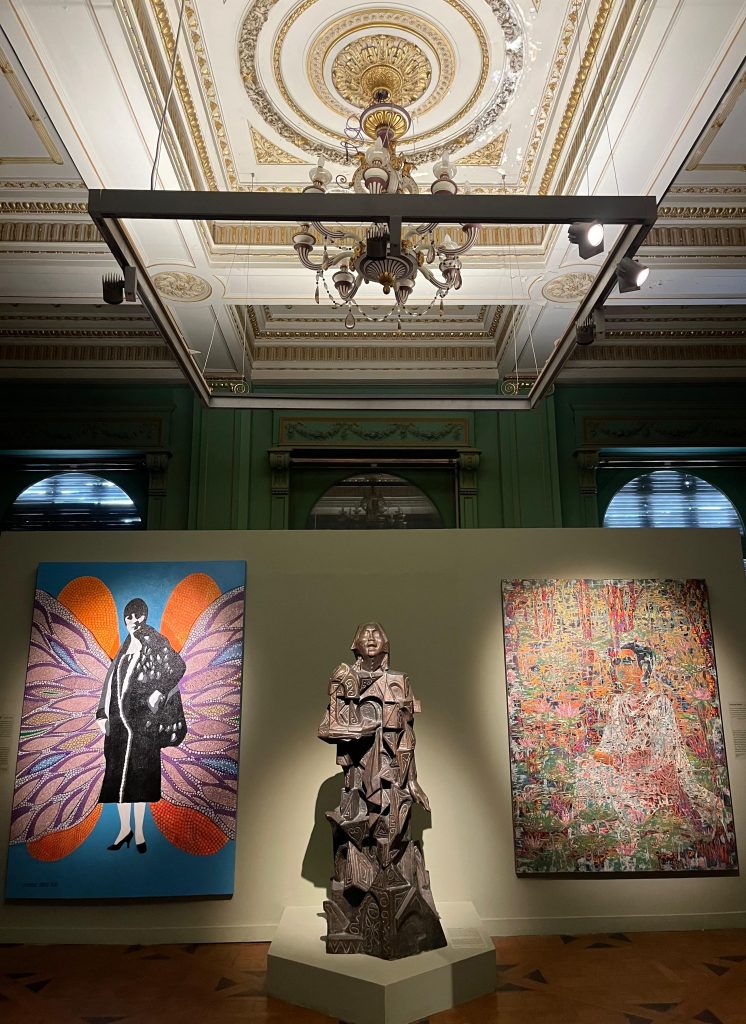
2025: The Year of Umm Kulthum
2025 has been declared the “Year of Umm Kulthum” in Egypt — marking 50 years since her passing. This exhibition does more than commemorate. It introduces her anew, especially to younger audiences. I even spotted a little boy peering curiously at a painting of her, his eyes wide as if meeting her for the first time.
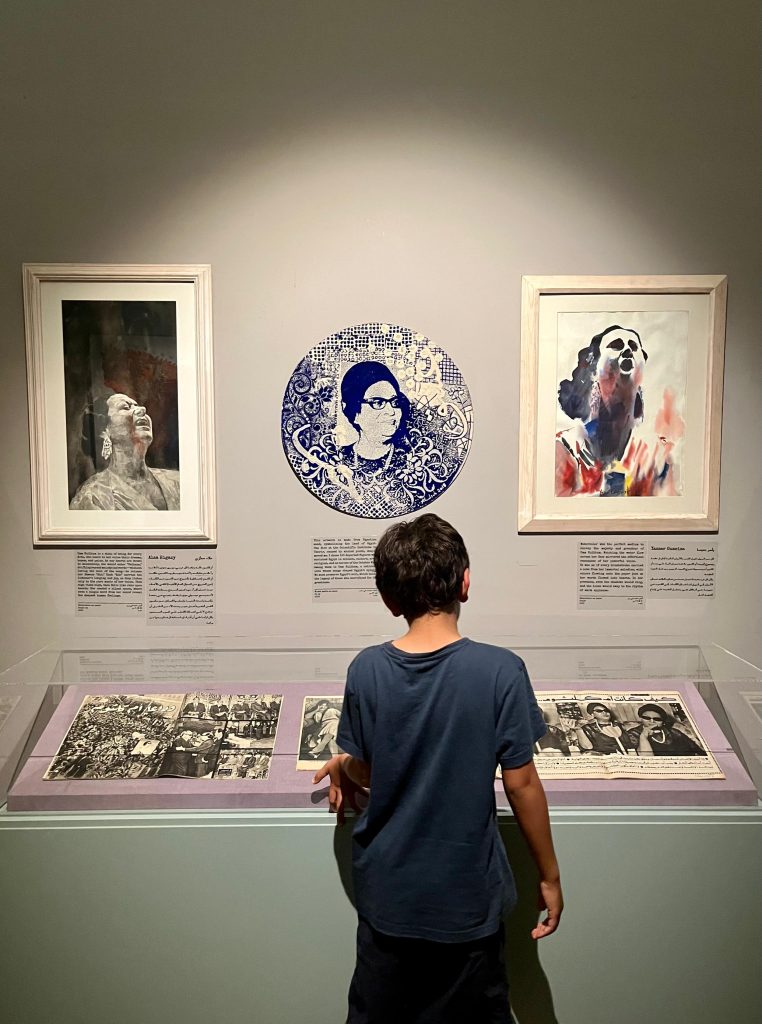
From Childhood to Stardom
The palace captures her life story from its earliest beginnings. Childhood diaries recall a little cat she adored, evenings singing for her father’s gatherings with mehlabya promised after, and her first glimpse of a cinema screen from a hotel balcony.
On display for the first time are Hussein Bicar’s framed sketches of her in Akhir Sa‘a magazine — lines and shadows that captured her rise, etched with the story beneath. Together with diaries and archives, they pierce the aura of the “Star of the East” and let us meet Umm Kulthum as the little girl from Tamay al-Zahayra before she became Egypt’s eternal voice.
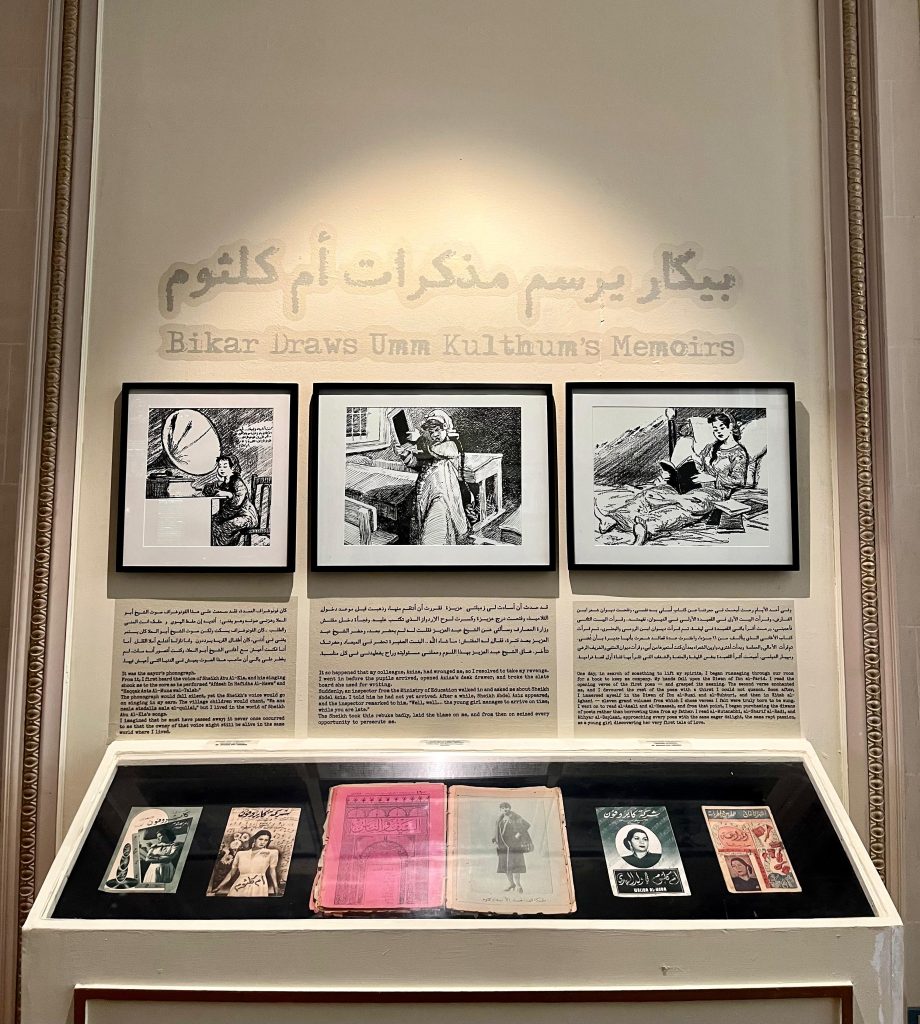
A Voice in Politics
Umm Kulthum was never just an entertainer. She was an ambassador. After the 1967 war, she traveled the world, raising donations for Egypt. Posters of her concerts trace these journeys, each performance a mix of music and diplomacy. Letters from Gamal Abdel Nasser and other leaders show how seriously her role was regarded — not only as Egypt’s voice, but as the Arab world’s unifying melody.
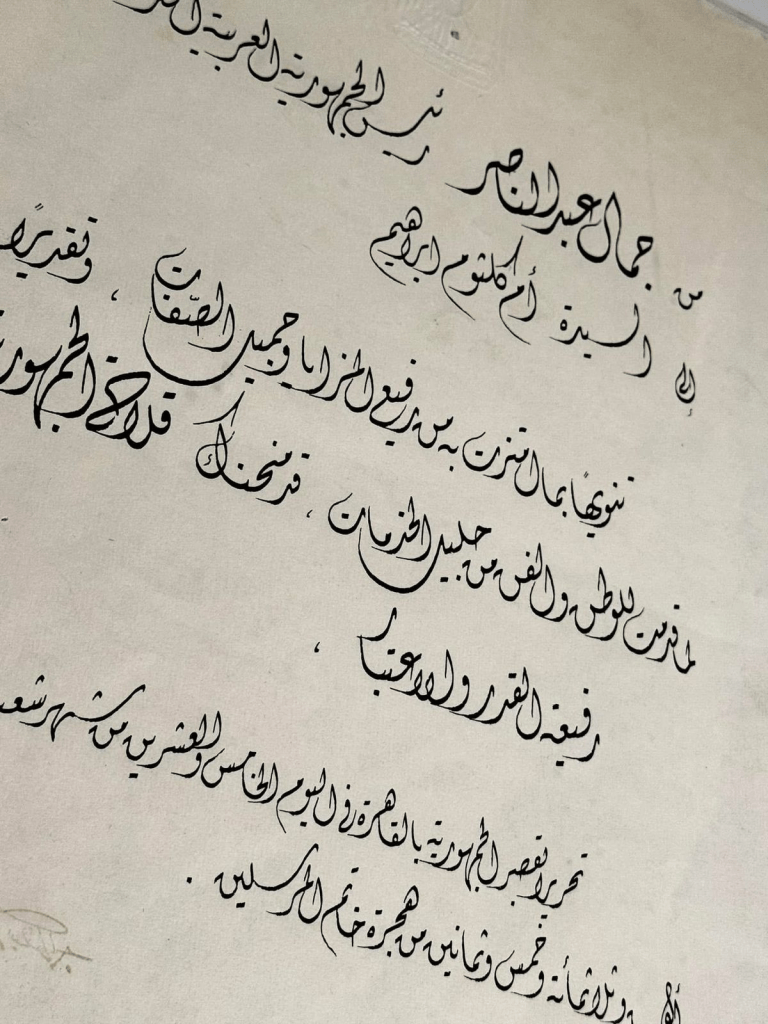
The Nation Mourns Umm Kulthum
The exhibition also takes us to the final chapter of her story: her death in 1975. Archival clippings, photographs, and broadcasts recall how millions of Egyptians poured into Cairo’s streets to mourn her — a farewell so vast it remains one of the largest funeral gatherings in history. Her passing was not just a personal loss but a national grief, echoing across generations.
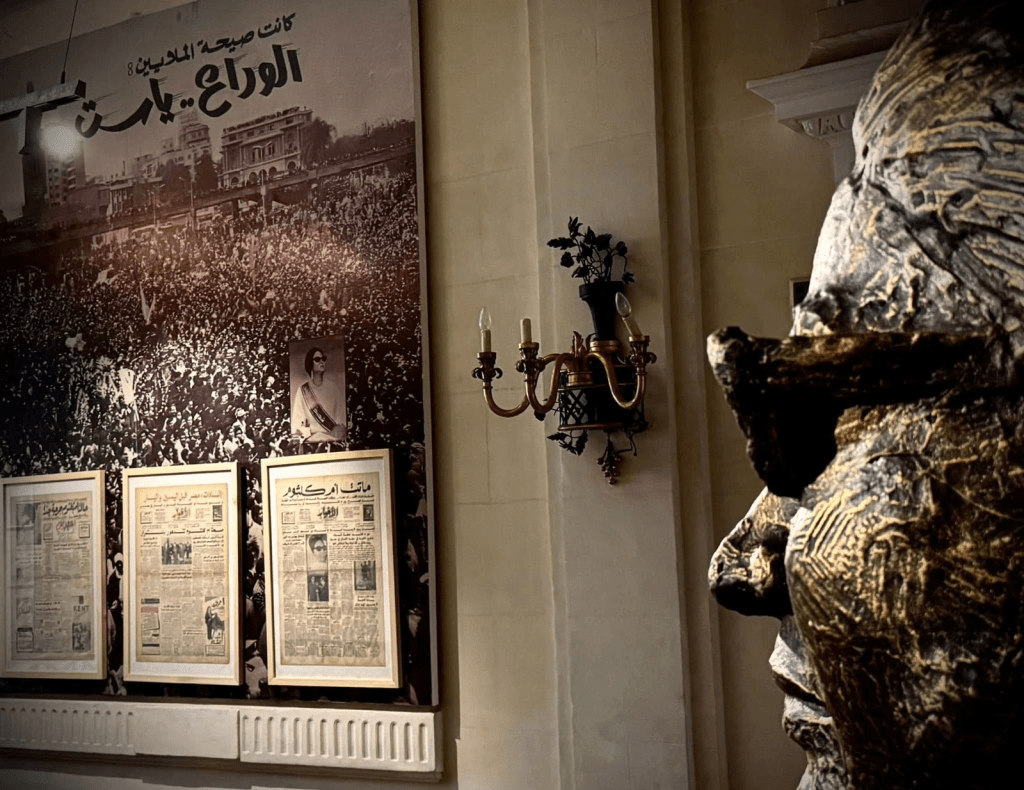
Memory in Motion: Artworks That Sing
Each room hums differently. Some with archival posters and letters, others glow with screens replaying her concerts and interviews — her laughter, her voice, her presence filling the palace once more.
But the centerpiece is the art — historical and contemporary — that translates her presence into color, line, and form. These are just some of the pieces that made me stop and wonder, among so many others equally moving.
Ali Said’s Painting
Here, Umm Kulthum is mid-song, her listeners encircling her in rapture. She holds a lotus-shaped microphone, its petals symbolizing eternity and purity. In the background, faces blur into bliss, as though her voice itself blooms eternal.
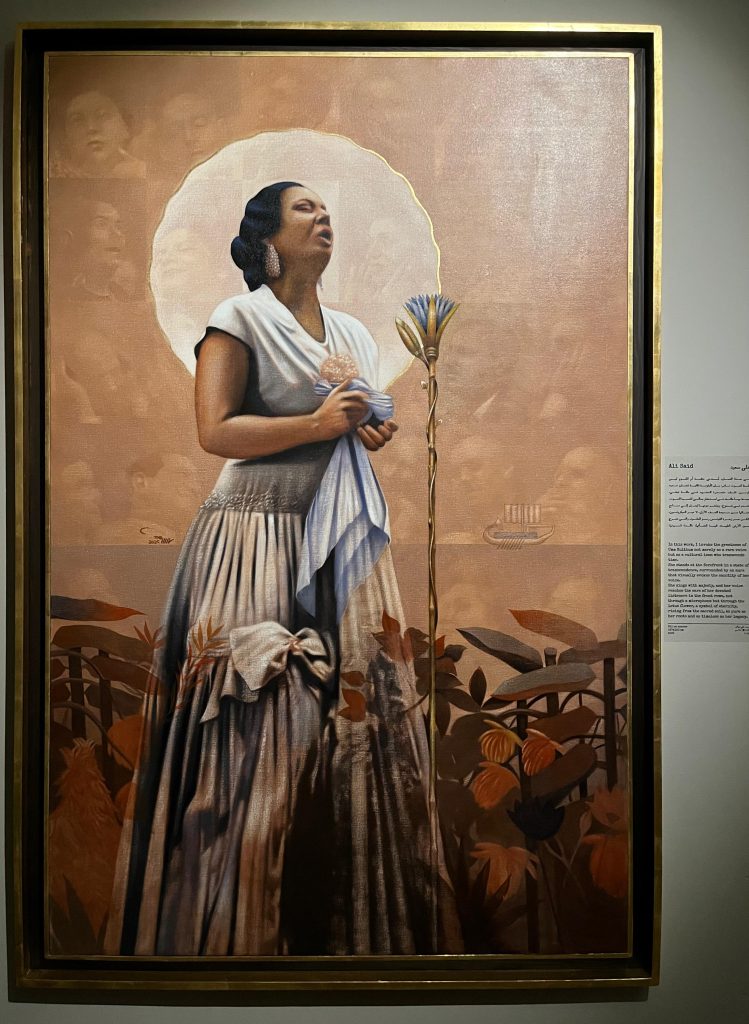
Said Sayed’s Painting
An acrylic on canvas transforms her sound into visible energy. Lines ripple like soundwaves, abstractions blending into figuration. You don’t just see Umm Kulthum here — you feel her.
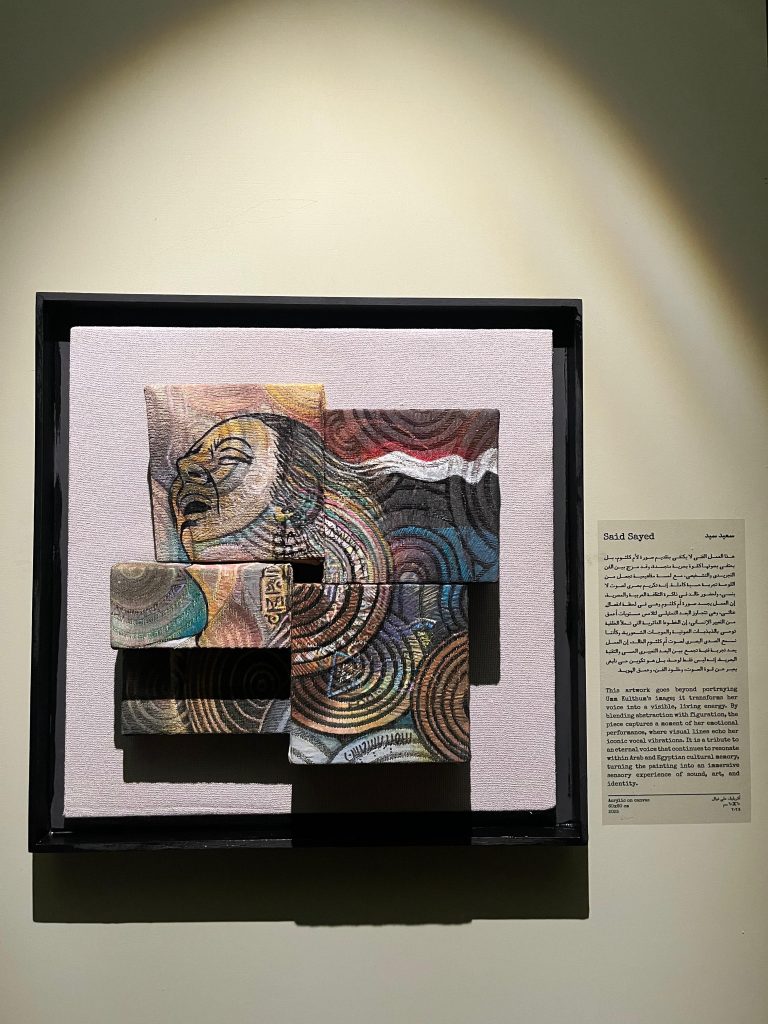
Ahmed Abdel Aziz‘s Sculpture
A sculpture of Umm Kulthum in her iconic sunglasses. The detail captures not only her likeness but her aura: self-assured, regal, rooted in culture.
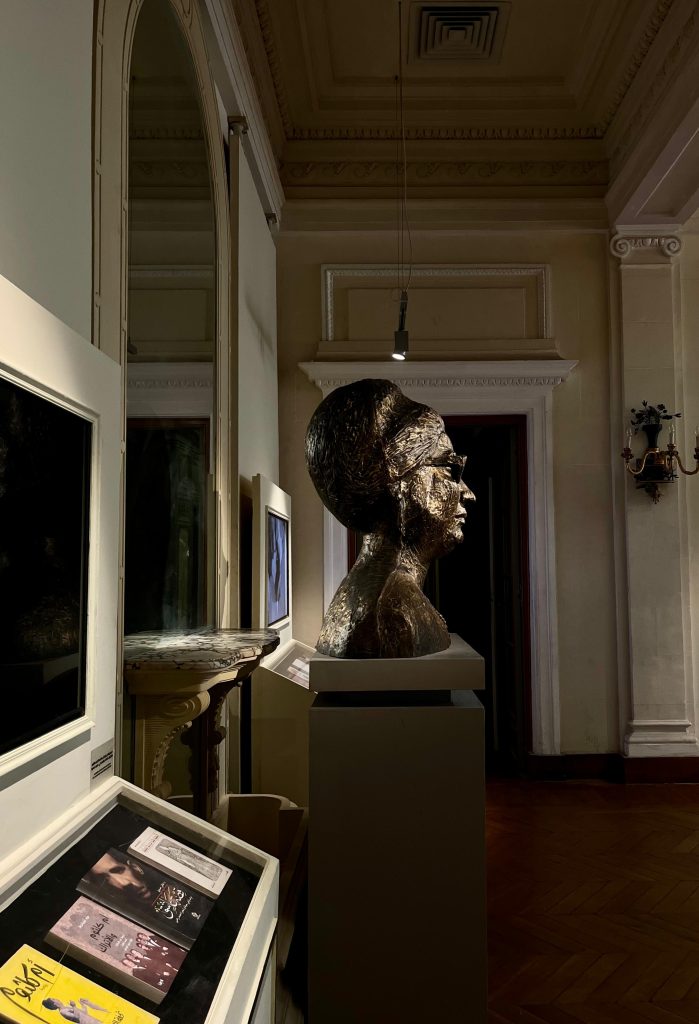
Omar Abdel Zaher’s Painting
A painting places her voice in a humble countryside home. Two villagers, who appear to be lovers, sit around a radio, their love illuminated by her song. Between lyrics on canvas and her painted face, Umm Kulthum hovers as both phantom and companion.
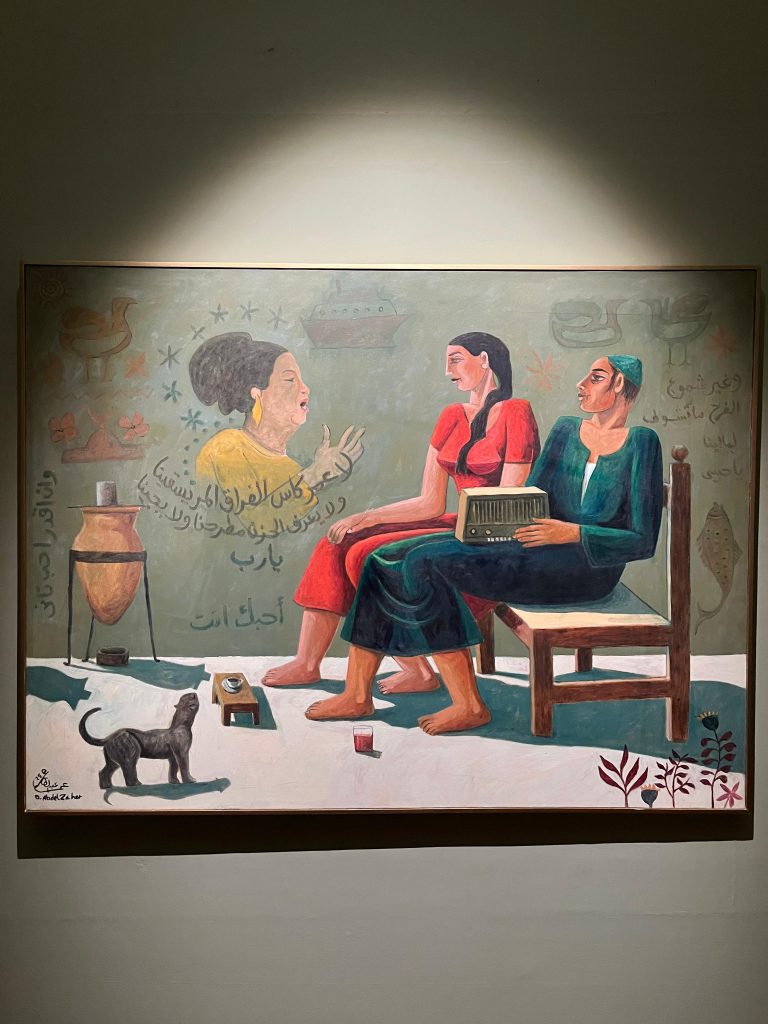
Treasures and Relics
The exhibition doesn’t stop at art. Her gowns, gloves, and handwritten notes feel hauntingly close. Posters of concerts, cassette tapes, CDs, and letters remind us how deeply her music was intertwined with Egypt’s cultural and political heartbeat.
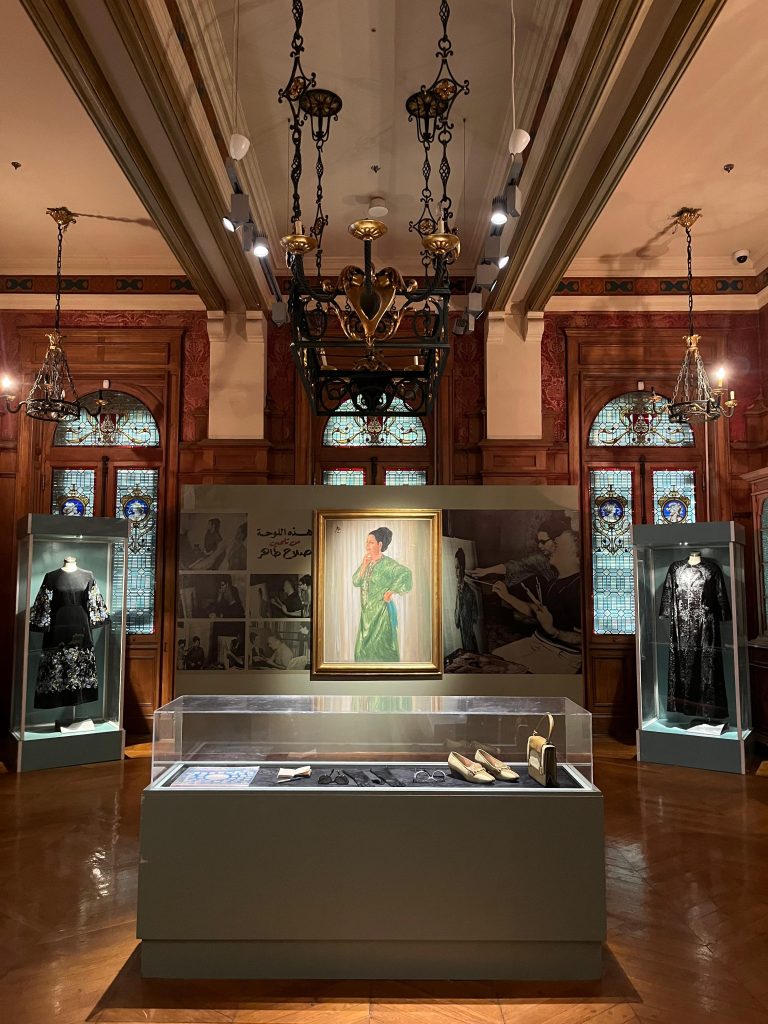

Why Aisha Fahmy Palace?
The choice of venue carries its own poetry. Umm Kulthum once lived and performed in this very neighborhood during the early stages of her career. To house her story here, against gilded walls and silk-draped rooms, is to bring her back to where she once belonged.
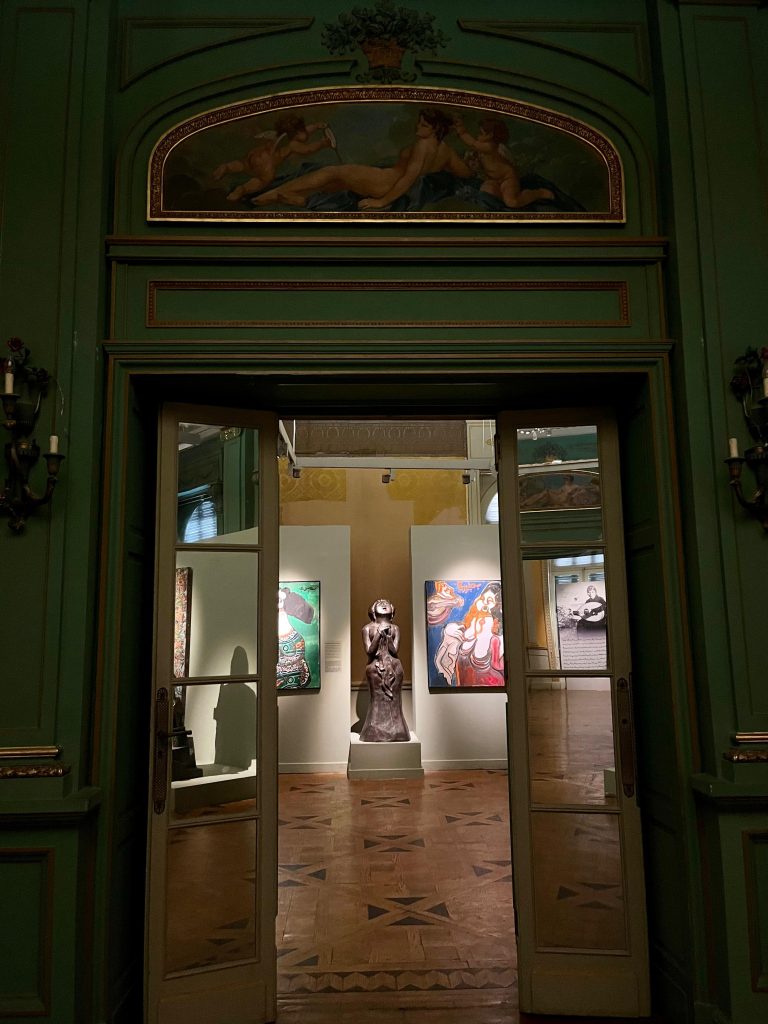
The Exhibition’s Pulse
Moving room to room, from childhood diaries to grand oil paintings, the exhibition whispers that Umm Kulthum is more than nostalgia. She is history, politics, culture, and art — still shaping how Egyptians, Arabs, and the world hear voice itself.
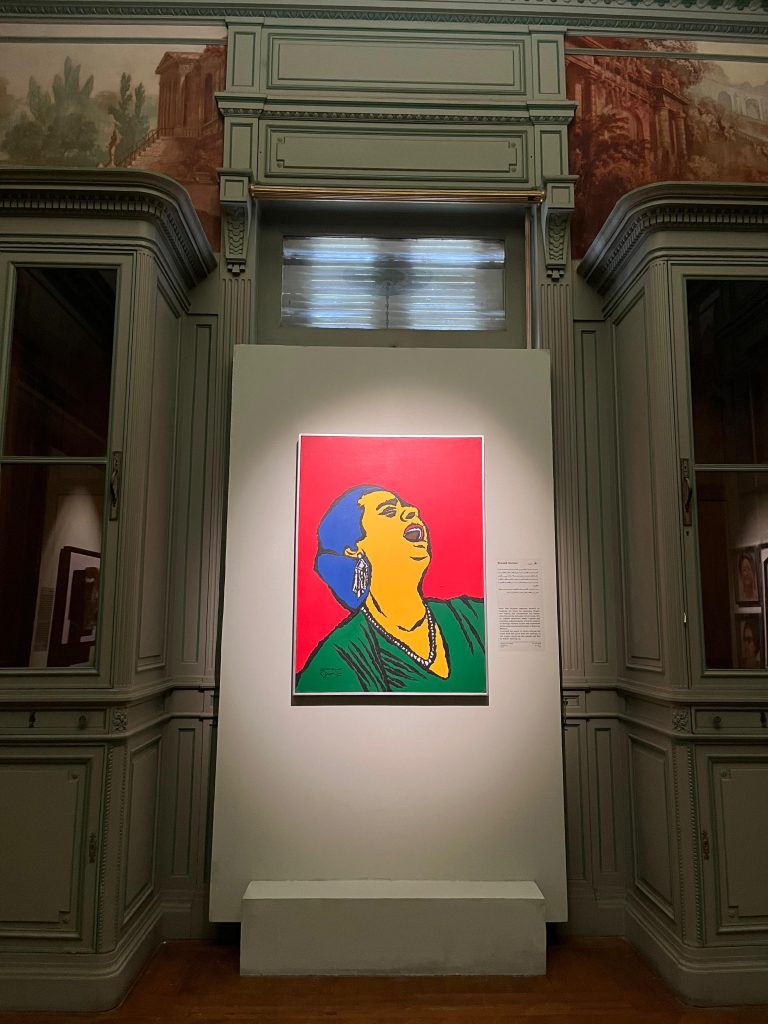
Final Note
By the time I stepped back outside, the Nile glistening nearby, I realized this exhibition is not about remembering Umm Kulthum. It’s about reliving her — in her words, her music, and her influence. She is not gone. She is here, in every hall, every painting, every note still humming through Cairo.
Walk through Umm Kulthum’s legacy — open daily 9 AM to 9 PM (except Fridays) until November 15, 2025, at Aisha Fahmy Palace, Zamalek.
WE SAID THIS: Don’t Miss…From the Nile to the Seine: Paris Remembers Umm Kulthum


